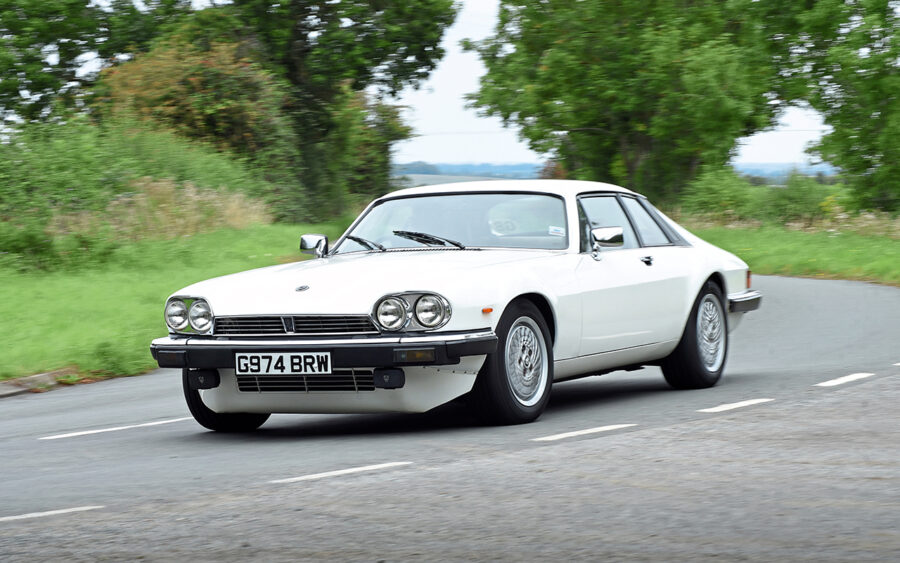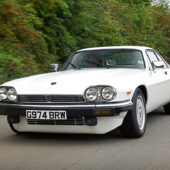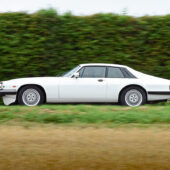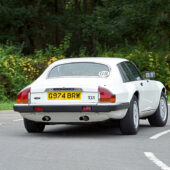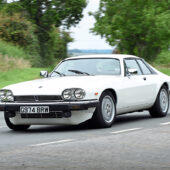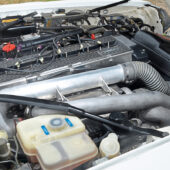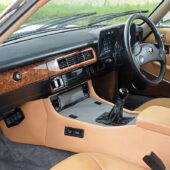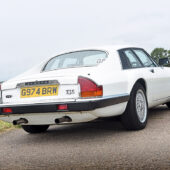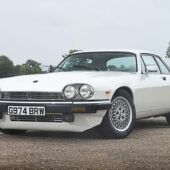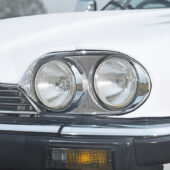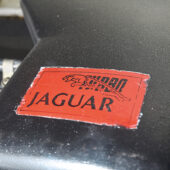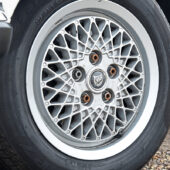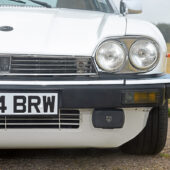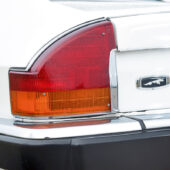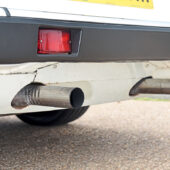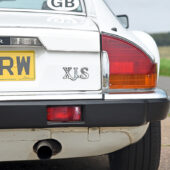This XJ-S was built as a prototype to test the XJ41 ‘F-Type’ running gear under unassuming bodywork. We get behind the wheel
Words and images: Paul Walton With thanks to: Jaguar Daimler Heritage Trust
Other than its flared wheel arches and deeper front air dam, this XJ-S might look largely standard, but that’s just a ruse to disguise its true purpose. Under the bonnet is a turbocharged version of Jaguar’s 4.0-litre engine, paired with all-wheel-drive, as the car was a development mule to test the drivetrain of the XJ41 project.
Although a prototype, the result is still a remarkably well-developed car that transforms the XJ-S into a genuine performance model to rival any of those at the time. But perhaps more importantly, it gives a hint of what the XJ41 would have felt had it reached production.
When Jaguar needed to secure funding from parent company BL in 1980 to develop the XJ40, management decided its chances would be improved if a sports car was designed on the same chassis. Not only would it offer BL better value for money but such a car would replace the XJ-S which, five years into its production, still wasn’t popular.
After the company’s designers had been asked to sketch a potential sports car, it was Keith Helfet’s proposal that was eventually chosen by the company founder Sir William Lyons. Handsome and well-proportioned, its soft, gentle curves clearly harked back to those of Jaguar’s previous models.
“For me, the origami styling [better known as wedge] fashion from the mid-70s to the early 80s was completely unappealing,” said Helfet in the October 2018 issue of Jaguar World magazine. “I don’t do square lines; I do flowing sculpture and that’s what Jaguars are about.”

Following a presentation at London’s Grosvenor Hotel in mid 1980, BL released the required £80m the following February to kickstart both projects. The sports car (the coupe was codenamed XJ41 and the convertible was XJ42) was added to Jaguar’s official product plan in 1982 with a proposed launch of four years later.
Initially it was a traditional rear-wheel drive sports car powered by Jaguar’s AJ6 straight six engine, but this would start to change in 1985 when the project was taken over by Jaguar’s New Vehicle Concepts department. Not only did NVC decide to redesign the car using CAD CAM (a first for Jaguar) but it then added two turbos plus all-wheel drive.
Keith Helfet says this was partly down to corporate ego. “The styling clinics told us the car was the best in class and NVC wanted its engineering and performance to be the same.”
But he also says performance models with all-wheel-drive had become fashionable. “Ever since the original Audi Quattro from 1980, quite a few cars were starting to have 4×4,” Helfet says. “Jaguar’s then design director, Jim Randle, had made the original XJ220 prototype all-wheel-drive because the Porsche 959 was.”
It was the same for the turbos. “If engineers wanted to achieve more performance, it was easy to bolt on a turbo since everything else about the engine stayed the same.”
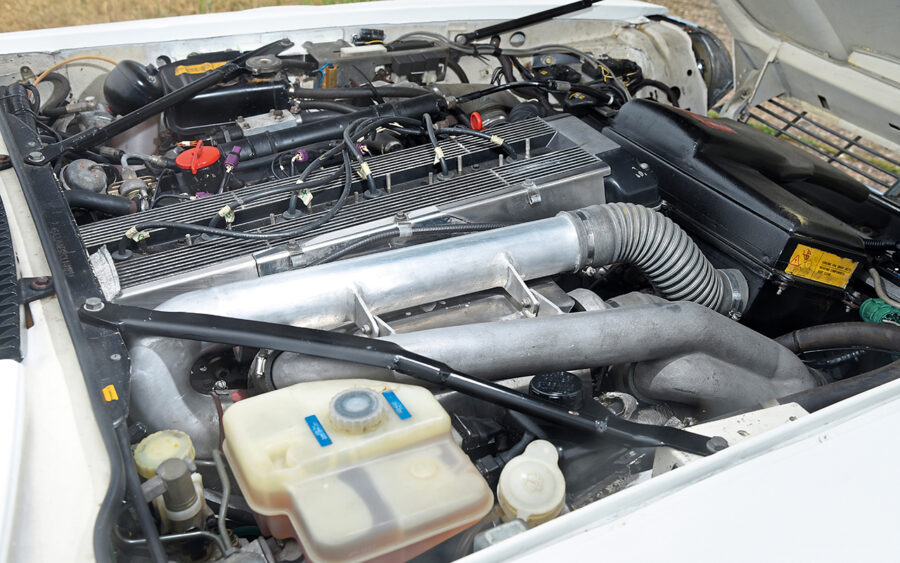
And so NVC added twin Garrett turbochargers to the 4.0-litre version of the AJ6, increasing its power from 245bhp to 330bhp. Considering the Porsche 911 Turbo had 30bhp less, it was an impressive figure for the time.
The AWD system chosen for the XJ41 was by FF Developments Ltd, a Coventry-based engineering specialist founded in 1971 by Tony Rolt who together with Duncan Hamilton had won the 24 Hours of Le Mans 18 years earlier with a Jaguar C-Type.
Rolt had been arguing the benefits of four-wheel-drive for passenger cars since the 1950s when he had started working for Harry Ferguson Research Ltd, whose system the 1966 Jensen FF featured.
FF Developments would then design the AWD used by the Ford RS200 rally car of 1984, followed by that of the original XJ220 in 1988.
As well as three close-to-production XJ41 prototypes in coupe, convertible and targa form the German coachbuilder Karmann had built for high speed testing in 1988, NVC also put together three XJ-S-based test mules with FF Developments’ AWD to further evaluate the system.
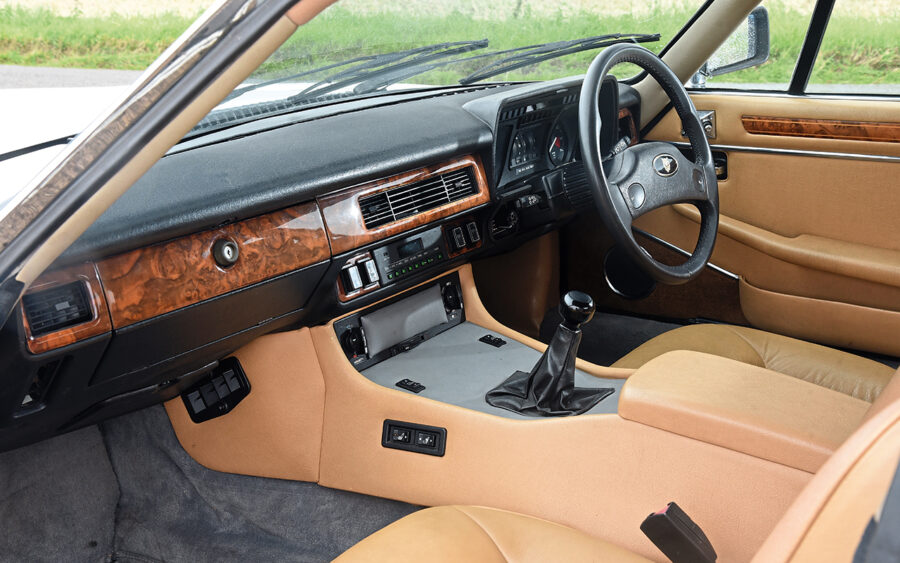
It was a huge feat of engineering to add all-wheel-drive to the rear-wheel-drive chassis. To squeeze the transfer case behind the gearbox the transmission tunnel needed to be enlarged, plus new and upwardly curved chassis legs were then designed to make room for the front driveshafts. To move much of the load back behind the wheel centre-line, a variation of an XJ40 subframe was used.
The front differential (driven by a shaft running forward from the transfer case) was bolted to the left side of the engine sump, with the right-hand driveshaft passing through the sump itself.
The rear was adapted to take the XJ40’s axle assembly with new chassis legs incorporating the required spring seat and mounting bosses for the forward A-frame mounts. There were also brackets extending down behind the axle for diagonal brace bars.
Due to the wider track of the 4×4 system and the larger wheels, the bodyshell required flared wheelarches. The new position of the radiator required a lower front vent that was housed in deeper air dam.
Of the three test mules produced, one had a V12, the second a normally aspirated 4.0-litre straight six and the third and final car had the twin Garret turbochargers fitted to an AJ6.
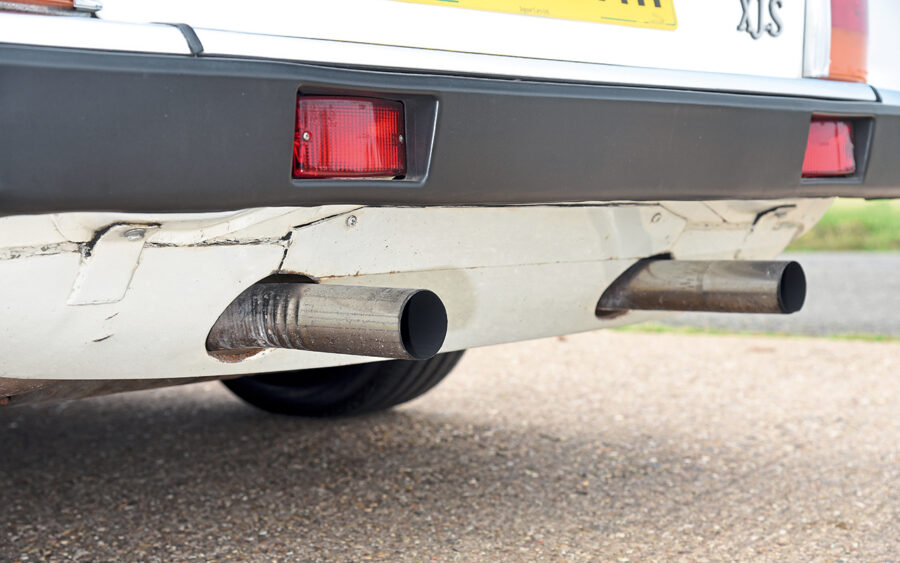
To make room for these, the engine had to be mounted lower and in the upright position before being moved back as far as possible. The radiator, intercooler and air-conditioning condenser were also dropped while the air cleaner was mounted in front of the engine with twin ducts leading back to the turbochargers.
Aluminium ducting directed the compressed air from the turbos to the crossflow intercooler, while more ducting continued back to the remote throttle body and the six-branch inlet manifold. A new exhaust was designed which included a large central silencer and then, over the rear driveshafts, a huge twin silencer assembly mounted underneath the raised boot floor and out though the modified rear valance.
Completed in April 1990 but using an older shell, the turbo car was finished just as Jaguar’s new owner Ford decided to cancel the XJ41. This was partly down to its now complicated and expensive specification but also because it had started before the American giant had taken over and Keith says Ford was only ever interested in its own projects.
As is well known, this wasn’t the end of the XJ41 story. A few months after its cancellation, Keith calculated the car’s body would fit onto the hardpoints of the XJ-S chassis. After Tom Walkinshaw heard about the car, development of this new, cheaper version was taken over by JaguarSport and later became the Ian Callum-designed Aston Martin DB7 from1993.
Incredibly for a prototype, the XJ-S with the two turbochargers wasn’t destroyed and it’s said was used for a short time by Jaguar’s then deputy chairman, John Grant. It was later gifted to the Jaguar Daimler Heritage Trust where it remains. After being in storage for several years, it made an appearance at the 2023 Motofest.
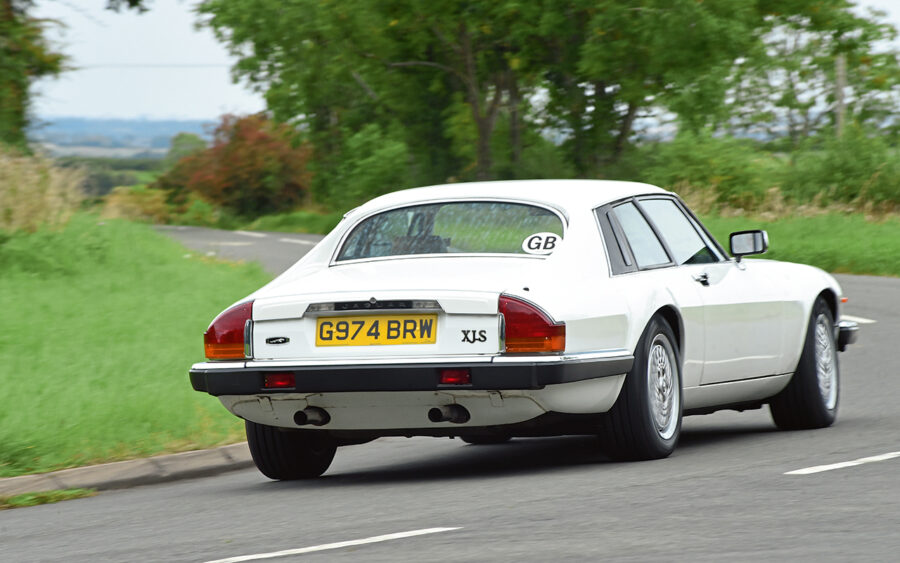
Having been fascinated by both the XJ41 and this individual car for almost two decades, its reappearance was too good an opportunity to miss.
The majority of the car’s secrets might be below the surface but the flared arches, 16in lattice-style alloy wheels, lower than standard profile tyres and deeper air dam still make it clear this isn’t a standard XJ-S. In my eyes the modifications give the car a similarly aggressive character to Group 44’s 1978 Trans Am championship winning XJ-S.
On the other hand, the way in which the twin exhaust pipes poke awkwardly out of the rear valance or the exposed rivets that hold the air dam in place like a Meccano set show neither is it a production model.
The interior is largely standard for a circa late-1980s XJ-S which means plenty of wood veneer across the dash, the original tumbler style of auxiliary dials in the binnacle plus large, comfortable seats covered in a soft leather upholstery. The only difference is an austere grey vinyl covering the central ‘ski slope’ section while the radio space has been blanked off.
I’d been expecting considerable amounts of turbo lag, similar to that of the XJ220 I tested in 2013 and Ferrari F40 a few years later. But not only is there no hesitation but the acceleration has all the force of a Floridian tornado, feeling considerably harder and more immediate than a standard XJ-S with either the V12 or 4.0-litre straight six.
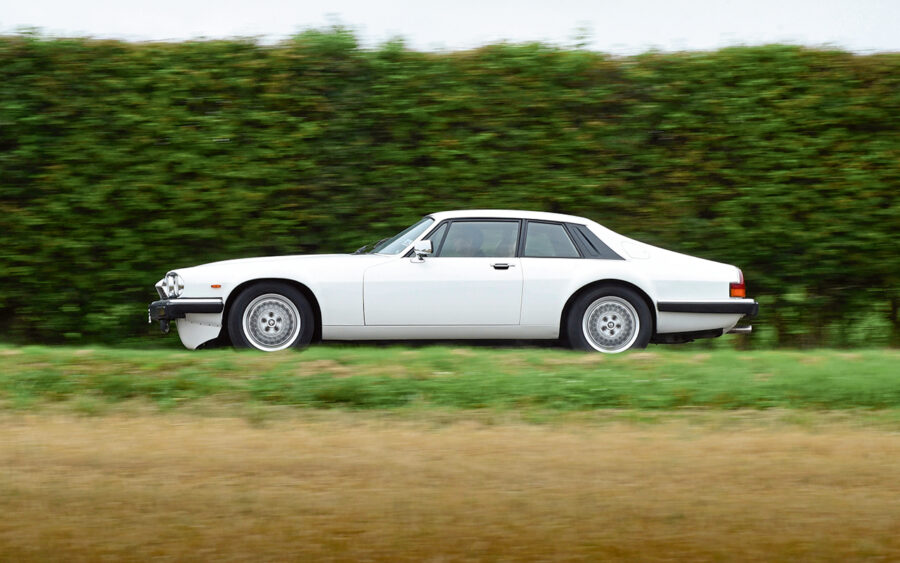
Its responsiveness reminds me of more established performance cars of the era such as the Ferrari 348, Honda NSX or 964-generation of Porsche 911. Despite having similar levels of power, it’s also considerably faster and more refined than the Aston Martin DB7 which used a supercharged version of the 3.2-litre AJ6.
The car’s weight isn’t known but all that extra plumbing for the turbos plus the 4×4 system means it must be more than the 3660lb (1660kg) of a standard XJ-S 4.0. Yet instead of feeling lead-footed like some AWD cars can (which in my opinion includes the current F-Type) it makes the XJ-S much more agile, confident and sure-footed. With the front wheels also finding grip together with limited body roll I have more confidence to accelerate harder and earlier out of a corner than I would in a standard model.
The steering is a little wooden maybe and the five-speed manual box not as fast or as accurate as it perhaps needs to be for a high-performance model but due to how well the car handles it’s easy to forget it’s only a test mule and not the finished article.
However, impressed as I am by the XJ-S 4×4, cars like the Mazda MX-5 and Lotus Elise prove that traditional rear-wheel drive together with lightness and simple perfect 50/50 weight distribution can be just as effective as all-wheel-drive. But as Keith says, by the end the XJ41 had become, “too ambitious.”
Yet the project is still significant in Jaguar’s recent history. It was directly due to the success of the turbocharged AJ6 project that Jaguar engineers later investigated forced induction to improve the performance of the X300-generation of XJR, eventually choosing an Eaton supercharger since it fitted in the engine bay.
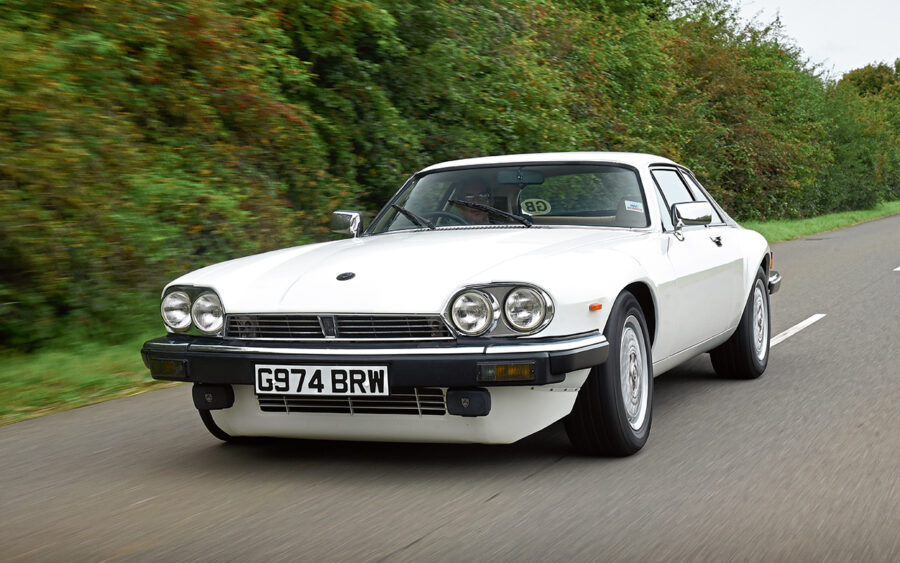
“Although that programme was dropped,” said the late Trevor Crisp, Jaguar’s then chief engineer for powertrains, during a 1994 interview, “we all realised that here we had an engine which was capable of putting out a great deal of power without the need for any basic structural change.” This means all of the supercharged models over the past 30 years have a direct link to the XJ41.
As for the XJ-S AWD, since the two remaining Karmann-built XJ41 prototypes also owned by JDHT – a red convertible and black targa – are now in an unroadworthy condition, it’s the closest we’ll get to driving the finished article. It doesn’t take long to realise if it had reached production, it would have a formidable car.

